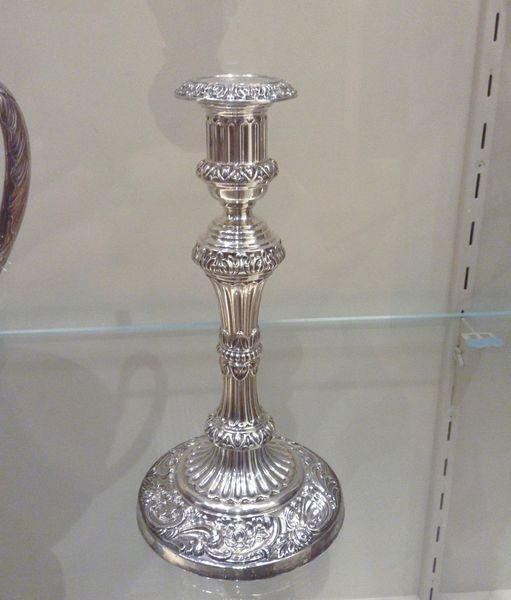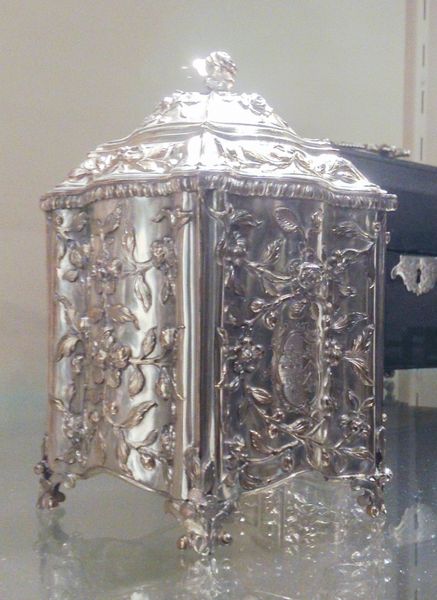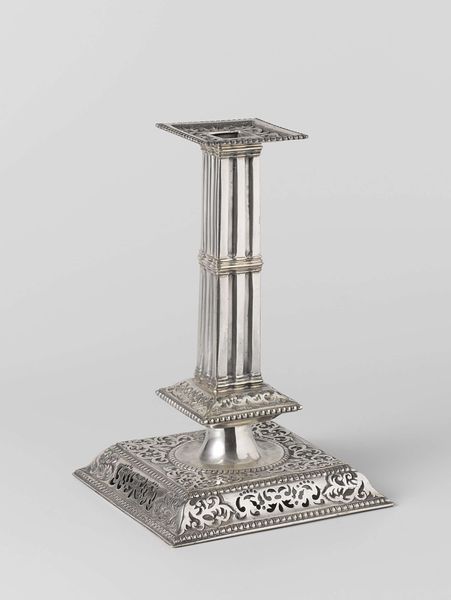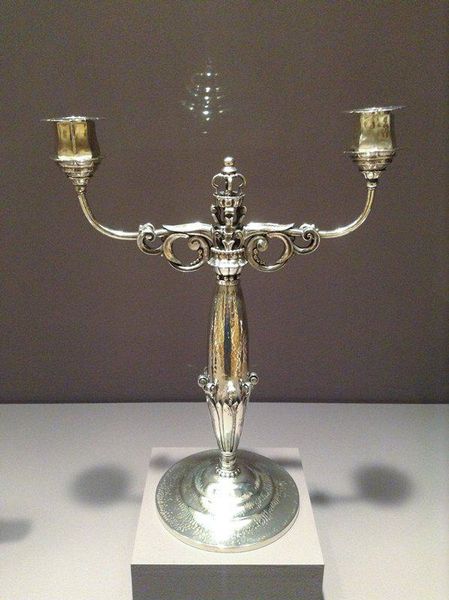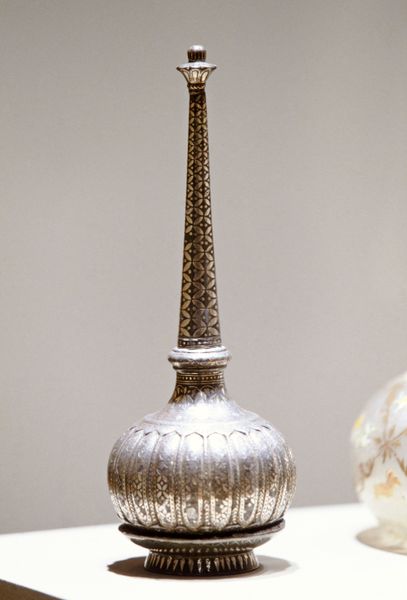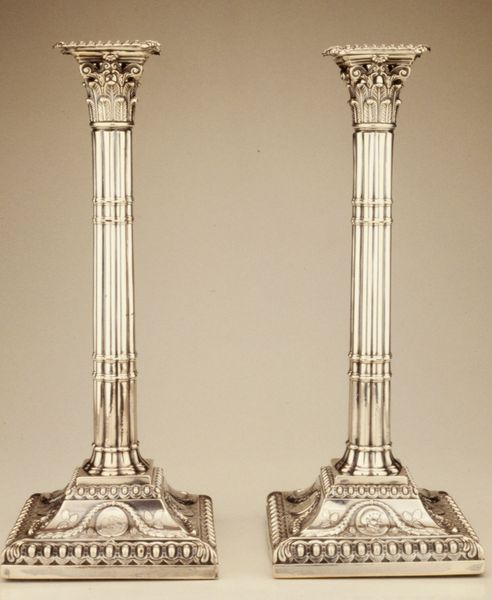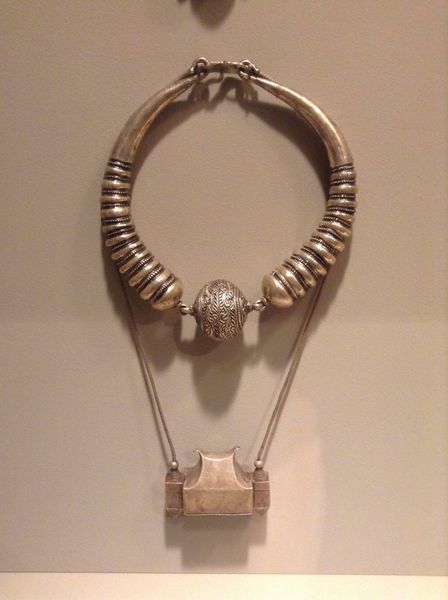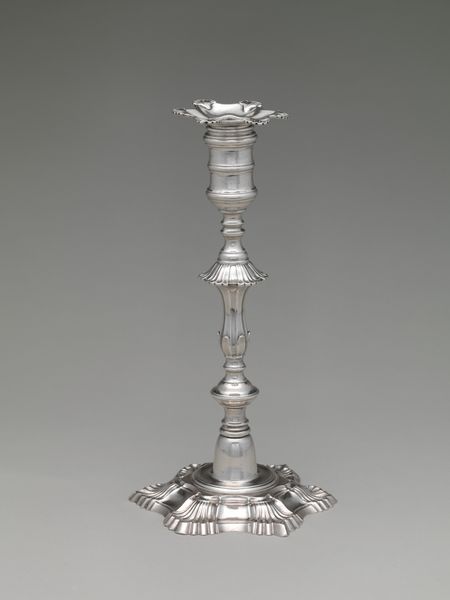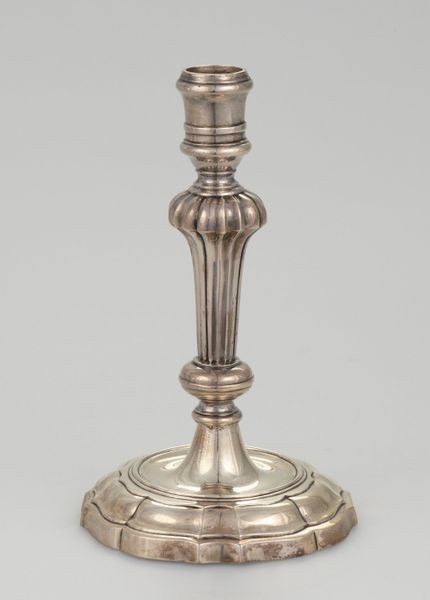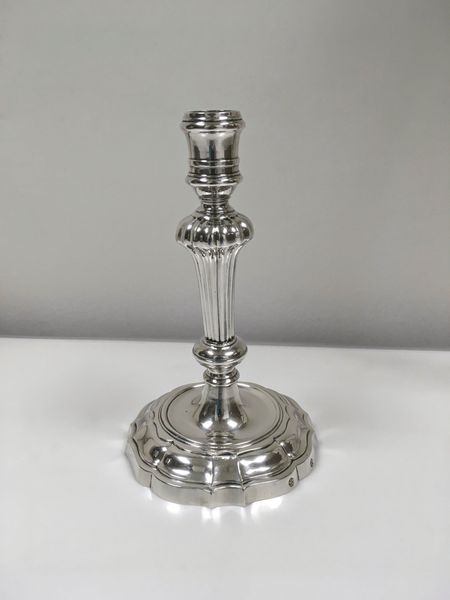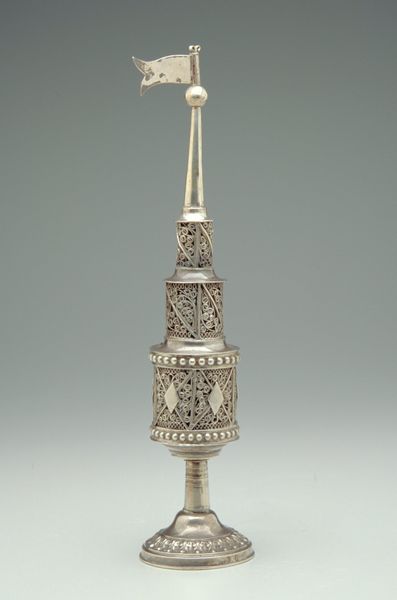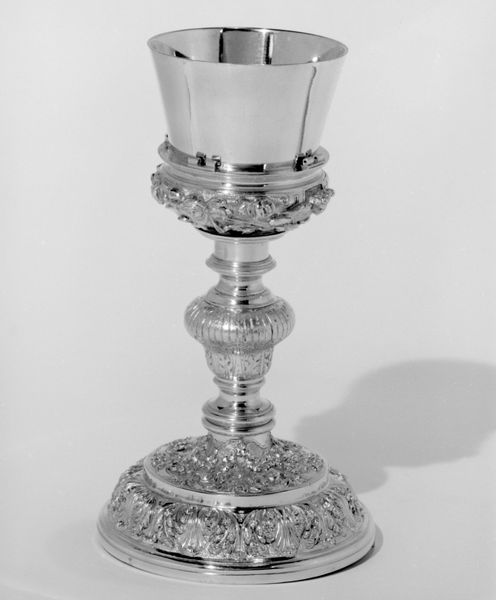
Dimensions: 12 1/4 x 5 x 5 in. (31.12 x 12.7 x 12.7 cm)
Copyright: Public Domain
Editor: Here we have William Cox III’s silver Candlestick from 1771-1772. The intricate detailing at the base catches my eye – what do you make of this piece? Curator: Well, the piece operates as a symbol of wealth and power during a period of immense social stratification. The Rococo style, with its emphasis on ornate detail and asymmetry, reflects the aristocratic tastes of the era, masking the growing discontent among the lower classes. Notice how the candlestick appropriates classical architectural elements – a twisted column, an embellished Corinthian capital? Editor: It’s like a miniature classical column… What was the intention? Curator: Exactly. And what is classicism usually about? Editor: Power, dominance and empire? Curator: Precisely! Here, the deliberate allusion served to legitimize the elite’s rule, harkening back to the perceived glory of antiquity. And yet, there is also a certain fragility in this elaborate display, isn't it? Does the opulence somehow try too hard? What do you think it signals about the elite's insecurities at that historical juncture? Editor: It is an attempt to show how strong they are, masking their fears, clinging to traditions even as society threatened to crumble beneath them… Curator: Indeed. A poignant material manifestation of a society teetering on the edge. So next time you see ornamentation like this, try to envision the social pressures that are hidden behind the pretty surface. Editor: Definitely a different way of seeing a candlestick. I never would have imagined it as a commentary on social unrest. Thanks.
Comments
No comments
Be the first to comment and join the conversation on the ultimate creative platform.
